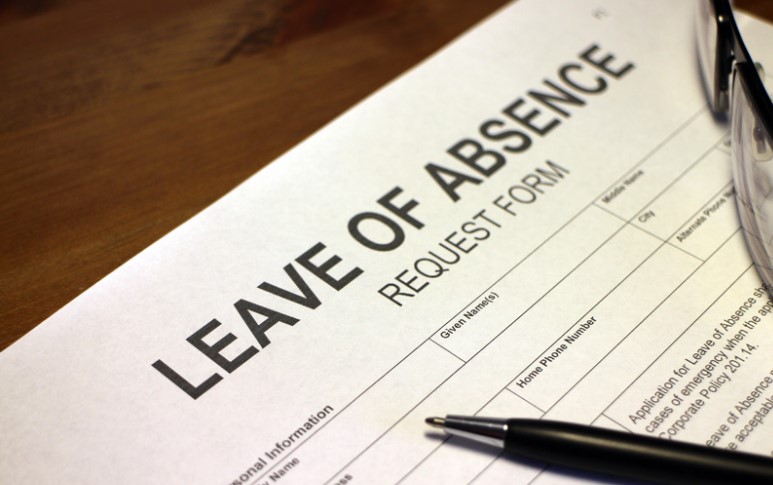Losing a loved one is undoubtedly one of life’s most challenging experiences. In these difficult times, it’s important to have the support and understanding of your employer. That’s where bereavement leave comes in. If you’re an employee in Ontario, Canada, this blog post will provide you with all the essential information about bereavement leave and how it works under Ontario’s employment standards. So, grab a cup of tea or coffee, sit back, and let us guide you through this often-overlooked but crucial aspect of workplace policies. Let’s dive into the world of bereavement leave in Ontario!
What is Bereavement Leave?

Bereavement leave, also known as compassionate leave or funeral leave, is a type of job-protected leave that allows employees to take time off work following the death of a family member or loved one. It recognizes the need for individuals to grieve and attend to important matters during this difficult period.
In Ontario, bereavement leave is regulated by the Employment Standards Act (ESA). It provides eligible employees with two days off per calendar year. However, it’s crucial to note that these two days are not per relative who passed away but rather a total entitlement for the entire year. So even if you experience multiple losses in a single year, you can only take a maximum of two days of bereavement leave.
The ESA does not specify whether these days must be taken consecutively or individually. This flexibility allows employees to tailor their time off based on their specific needs and circumstances. For example, taking one day off immediately after the passing and another day later when funeral arrangements are made.
Who is Entitled to Bereavement Leave?
Bereavement leave is a crucial benefit that allows employees to take time off work to grieve and attend funeral services after the death of a loved one. But who exactly is entitled to this compassionate leave in Ontario?
According to the Employment Standards Act, employees are eligible for bereavement leave if they have been employed with the same employer for at least 90 days. This means that new hires may need to wait a few months before being able to access this important support.
It’s worth noting that bereavement leave applies regardless of whether the deceased person was an immediate family member or not. The law does not distinguish between different types of relationships, recognizing that grief can affect individuals even if they are not related by blood or marriage.
Furthermore, it’s important to understand that bereavement leave is not provided on a per-incident basis. Instead, employees are entitled to two days off work per calendar year for any personal loss they experience during that period.
Anyone who has worked for their employer for at least 90 days in Ontario can claim up to two days of bereavement leave per year to mourn and honour those who have passed away.
How Much Bereavement Leave is Provided?

Bereavement Leave in Ontario allows employees to take two days off work per year when they experience the loss of a loved one. However, it’s important to note that this entitlement is not based on the number of relatives who pass away, but rather on a total of two days per calendar year.
Unfortunately, if multiple close relatives die within the same year, an employee is still only permitted those two days of bereavement leave as per minimum employment standards. While it may be challenging for individuals dealing with multiple losses in a single year, the law does not require employers to grant additional time off beyond the standard allowance.
That being said, compassionate employers may choose to provide extra bereavement leave if multiple close relatives pass away. Employees and employers need to have open communication during such difficult times.
What are the Criteria for Taking Bereavement Leave?
To be eligible for bereavement leave in Ontario, employees must meet certain criteria. First and foremost, they need to have been employed with the same employer for at least 90 days. This means that new hires may not be entitled to this type of leave until they have completed their probationary period.
Once an employee meets the minimum employment requirement, they are entitled to three days of bereavement leave per calendar year. It’s important to note that this entitlement is based on the entire year and not on each incident of bereavement. So even if unfortunate circumstances result in multiple losses within a year, employees can only take a total of three days off.
The purpose of bereavement leave is to provide individuals with time off work without risking their job security. During these challenging times, employees must have the opportunity to grieve and attend memorial services or funerals without additional stress or worry about repercussions at work.
How to Apply for Bereavement Leave?

The process of applying for bereavement leave in Ontario will vary depending on your employer’s policies. However, there are some general steps that you can follow:
- Talk to your employer: The first step is to talk to your employer about your need for bereavement leave. Let them know who has died and when the death occurred. You should also ask about your employer’s bereavement leave policy, including the length of leave, notice requirements, and pay.
- Give your employer notice: Most employers require employees to give at least some notice before taking bereavement leave. The amount of notice required will vary from employer to employer.
- Provide proof of the death: Your employer may ask you to provide proof of the death, such as a death certificate or funeral program.
- Return to work: You should let your employer know when you expect to return to work.
Here are some additional tips for applying for bereavement leave:
- Be clear and concise when talking to your employer about your need for leave.
- Be respectful of your employer’s time and deadlines.
- Provide all of the required documentation as soon as possible.
- Be prepared to answer any questions that your employer may have.
Conclusion
Bereavement leave in Ontario is an essential benefit that provides employees with the opportunity to grieve and attend to their matters during times of loss. While it may be difficult for employers to accommodate multiple instances of bereavement within a calendar year, showing empathy and understanding can go a long way in supporting their employees.
Remember, bereavement leave is not just about following legal requirements; it’s about being compassionate and recognizing the emotional toll that losing a loved one can have on individuals. By offering this time off, employers demonstrate their commitment to employee well-being and foster a supportive work environment.
FAQs – An Overview of Bereavement Leave in Ontario
1. How many bereavement days are you entitled to in Ontario?
Upon the passing of certain family members, Ontario employees are entitled to up to two days of unpaid leave from their jobs each year.
2. Who is considered immediate family for bereavement leave in Ontario?
Spouse, Parent, Child, and Sibling are considered as immediate family members for bereavement leave in Ontario.
3. How many days do you get for a family bereavement?
The number of days of bereavement leave you are entitled to in Canada depends on the province or territory you live in. In Ontario, you are entitled to up to two days of unpaid bereavement leave per calendar year upon the death of a Spouse, Parent, Child, Sibling and relatives who are dependent on the employee for care or assistance
4. Is bereavement leave paid in Canada?
Bereavement leave is not always paid in Canada. Some employers may offer paid bereavement leave as a matter of policy, but this is not required by law. If you are unsure whether you are entitled to paid bereavement leave, you should consult with your employer.











